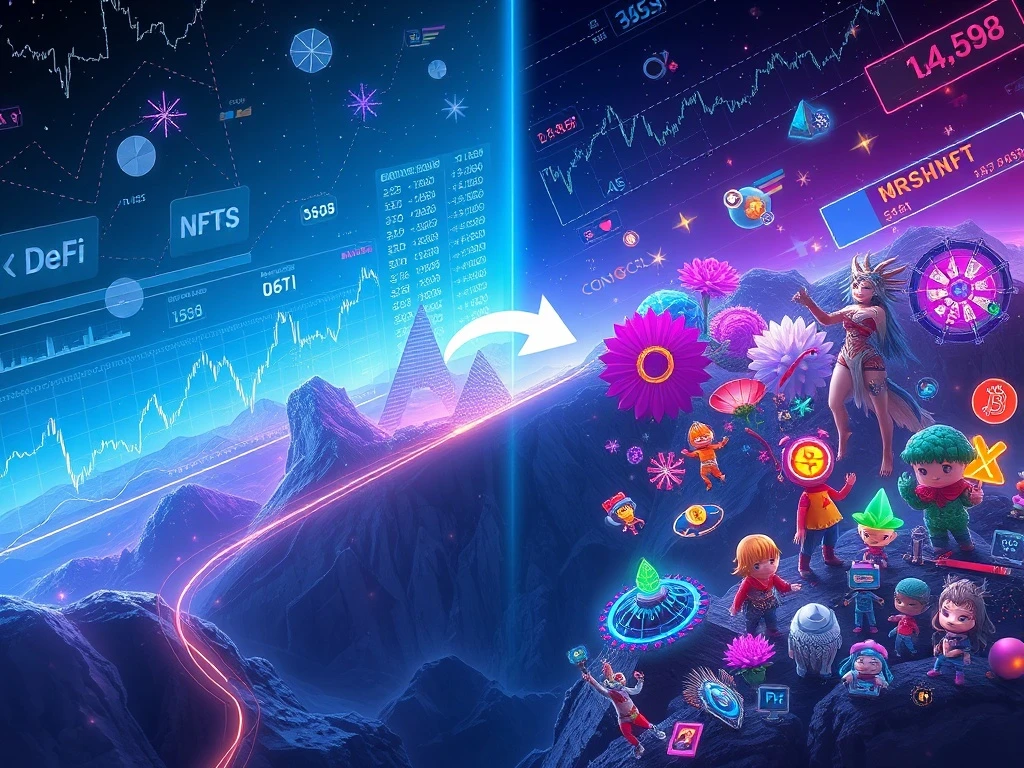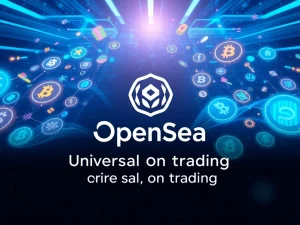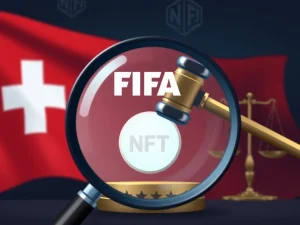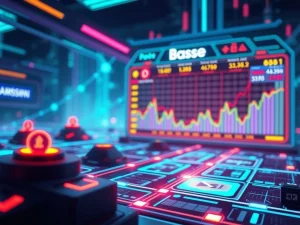Surging DeFi Meets NFT Dominance: A Shift in Crypto Market DApp Activity

The crypto market constantly evolves, presenting both familiar patterns and surprising shifts. Recently, a fascinating divergence emerged: decentralized finance (DeFi) liquidity soared to unprecedented levels, yet user engagement gravitated strongly towards non-fungible tokens (NFTs). This unexpected trend, highlighted in a recent DappRadar report, reveals a dynamic landscape within decentralized applications (DApps).
DeFi’s Remarkable Ascent Fueled by Tokenized Stocks
Locked liquidity on decentralized finance (DeFi) applications reached a remarkable milestone in July, hitting a record $270 billion. This significant increase partly stemmed from the impressive growth of tokenized stocks. DappRadar’s data clearly illustrates this expansion. The total value locked (TVL) in DeFi protocols jumped a substantial 30% month-over-month. Furthermore, active wallets engaging with tokenized stocks saw an explosive rise, from approximately 1,600 to over 90,000. Consequently, their market capitalization surged by an impressive 220%. This expansion signifies a growing bridge between traditional finance and the decentralized ecosystem, attracting new participants and capital into the DeFi space.
The surge in tokenized stocks highlights a crucial development. These digital assets represent traditional securities on the blockchain. They offer fractional ownership and 24/7 trading, appealing to a broader investor base. This innovation enhances accessibility and liquidity within the broader crypto market. As more users discover the benefits of tokenized assets, DeFi’s foundational strength continues to grow. This growth provides a robust financial infrastructure for the entire decentralized world.
The Pivotal Shift: NFT DApp Activity Surges Ahead
Despite the substantial climb in DeFi liquidity, user attention demonstrated a clear shift. In July, user engagement notably favored NFTs over traditional DeFi protocols. Approximately 3.85 million of the 22 million daily active wallets interacted with NFT DApps. This figure slightly surpassed the number of wallets active in DeFi, marking a significant change in user preference. This shift underscores the growing appeal and mainstream adoption of digital collectibles and blockchain-based art.
Several key players drove this surge in NFT DApp activity. Ethereum-based marketplace Blur, for instance, captured up to 80% of daily NFT trading volume. OpenSea, another prominent platform, maintained its lead in active users, attracting roughly 27,000 traders. Zora also gained considerable momentum, leveraging its creator-first Layer 2 solution and the $ZORA token for low-cost minting. These platforms offer diverse functionalities, from high-volume trading to accessible creation tools, collectively fueling the NFT market’s resurgence.
Moreover, major global brands continued their experimental forays into the NFT space. Nike.SWOOSH partnered with EA Sports for virtual sneaker drops, showcasing innovative digital fashion. Louis Vuitton, Rolex, and Coca-Cola (China) launched authentication and collectible pilots. These collaborations validate the technology’s potential beyond art, extending into brand engagement and product verification. Overall NFT trading volumes also rose significantly, increasing about 36% in July to $530 million, up from $389 million in June. While still below past peaks, this upward trend reflects renewed interest and market confidence.
OG Collections Spark Renewed Interest
July’s rebound also saw a notable resurgence in interest for ‘OG’ NFTs, particularly collections like CryptoPunks. Data from NFT Floor Price indicates that this iconic Ethereum-based collection experienced over a 25% increase in value during the past month. This impressive performance highlights the enduring appeal of established, blue-chip NFTs. During a recent 24-hour period, nine of the top 10 NFT sales were CryptoPunks, further emphasizing their market dominance. The sole non-Punk sale was an NFT from the renowned Web3 artist Beeble, indicating a diverse, yet concentrated, high-value market.
The renewed focus on original collections often reflects a flight to quality. Investors and collectors seek established assets with historical significance and proven scarcity. This trend suggests a maturing market, where value increasingly consolidates around recognized brands and communities. For many, these ‘OG’ NFTs represent digital heritage and status within the crypto market. Their sustained value proposition attracts both seasoned collectors and new entrants seeking stability in a volatile asset class. This dynamic interplay between new projects and established collections shapes the ongoing evolution of the NFT ecosystem.
NFT Market: Still Recovering from Past Peaks
Despite July’s encouraging rebound, the overall NFTs market remains significantly below its past peaks. DappRadar’s 2024 industry overview provides a broader perspective. It shows that NFT trading volume dropped 19% year-over-year. Similarly, sales counts declined by 18%, making 2024 one of the weakest years since 2020 for the sector. These figures underscore the challenges the market has faced following its initial boom.
Further data from CryptoSlam for H1 2025 emphasizes this slow recovery. NFT sales totaled $2.82 billion, representing a 4.6% decrease from the second half of 2024. While July witnessed a notable resurgence in trading volume and floor prices, the market still operates well below its 2021 highs. During that peak period, trading volumes routinely ran into the tens of billions of dollars. The current landscape suggests a more cautious and selective market. Investors are increasingly discerning, focusing on utility, community, and established value rather than speculative hype. This measured growth indicates a shift towards sustainability rather than explosive, short-lived rallies within the crypto market.
The Evolving Landscape of DApp Activity
The dual trends of surging DeFi liquidity and dominant NFT DApp activity paint a complex picture of the decentralized ecosystem. While tokenized stocks continue to drive significant capital into DeFi, user attention has clearly shifted towards the vibrant and diverse world of NFTs. This indicates a maturing market where different sectors attract distinct user bases and capital flows. The increased engagement with NFTs, even as the market recovers, highlights their growing cultural and economic significance.
This evolving landscape presents both opportunities and challenges. For developers, understanding these user preferences becomes crucial for building relevant applications. For investors, monitoring these shifts provides valuable insights into emerging trends and potential growth areas. As the crypto market continues its dynamic expansion, the interplay between financial innovation in DeFi and cultural engagement in NFTs will undoubtedly shape its future trajectory. The decentralized space remains a fertile ground for innovation, constantly redefining how users interact with digital assets and financial services.









